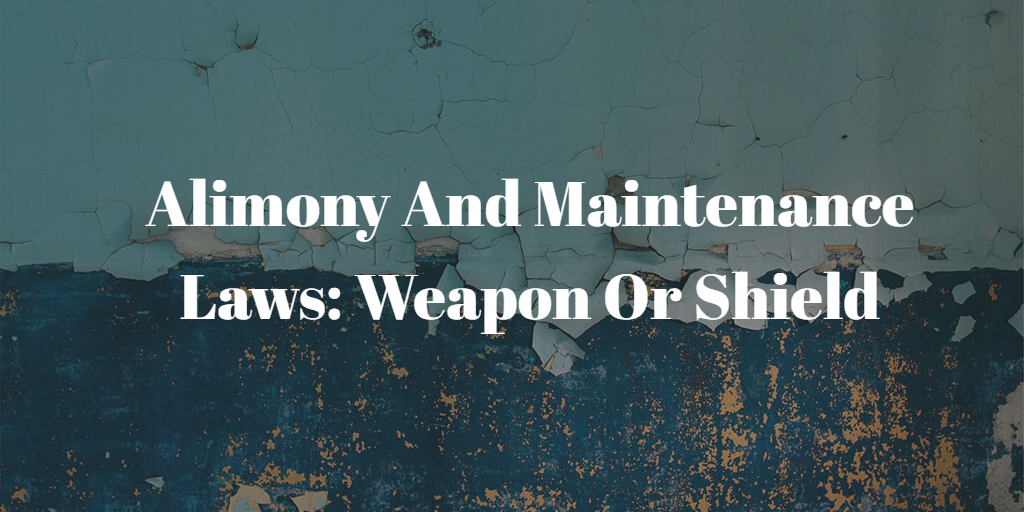Alimony And Maintenance Laws: Weapon Or Shield?

Table of Contents
Introduction
Alimony and Maintenance Laws in India
The Role of Alimony and Maintenance
Alimony as a Weapon or a Shield
Weapon
Shield
Striking a Balance
Conclusion
Introduction
Alimony and maintenance laws in India have been a subject of debate, particularly in the context of gender equality and the protection of the rights of women in matrimonial disputes. This article explores the complexities of alimony and maintenance laws in India and discusses whether they serve as a weapon or a shield in protecting the financial interests of both parties in a marriage.
Alimony and Maintenance Laws in India
In India, alimony and maintenance laws are governed by various personal laws, depending on the religion of the parties involved, and the secular law under the Code of Criminal Procedure. The Hindu Marriage Act, the Special Marriage Act, the Parsi Marriage and Divorce Act, and the Indian Divorce Act contain provisions relating to alimony and maintenance for the respective religious communities. For Muslims, alimony and maintenance laws are governed by the Muslim Women (Protection of Rights on Divorce) Act.
The Role of Alimony and Maintenance
Alimony and maintenance are financial provisions made to ensure that a spouse who is economically dependent or has a significantly lower income is not left destitute after a divorce or separation. These provisions aim to strike a balance between the financial needs of both parties and promote financial independence and self-sufficiency.
Alimony as a Weapon or a Shield
The debate around alimony and maintenance laws in India revolves around whether they serve as a weapon or a shield in matrimonial disputes.
Weapon
Critics argue that alimony and maintenance laws can be misused as a weapon, leading to false claims, exorbitant demands, and harassment of the paying spouse. They contend that these laws may create a perverse incentive for the economically dependent spouse to seek divorce or separation, with the goal of obtaining financial gains.
Shield
Proponents of alimony and maintenance laws argue that they serve as a shield for the economically dependent spouse, often women, who may have sacrificed their careers or educational opportunities to care for the family. These laws provide a safety net for vulnerable individuals, ensuring that they are not left without financial support in the event of a divorce or separation.
Striking a Balance
To strike a balance between the competing interests, Indian courts consider various factors when determining alimony and maintenance amounts, including the financial needs of both parties, their earning capacity, the duration of the marital relationship and the lifestyle enjoyed by the couple throughout their marriage. This approach aims to prevent misuse of alimony and maintenance laws while still ensuring that the economically dependent spouse receives adequate financial support.
Reforms to alimony and maintenance laws, such as implementing clear guidelines, ensuring timely payments, and promoting alternative dispute resolution mechanisms like mediation, can further strike a balance between the interests of both parties and minimize the potential for misuse.
Conclusion
Alimony and maintenance laws in India serve a crucial purpose in providing financial support to economically dependent spouses in the event of a divorce or separation. While there is potential for misuse of these laws, they also act as a shield to protect the rights and interests of vulnerable individuals. Striking a balance between the competing interests requires careful consideration of the specific circumstances of each case, along with the implementation of legal reforms and alternative dispute resolution mechanisms to promote fairness and minimize the potential for abuse.


